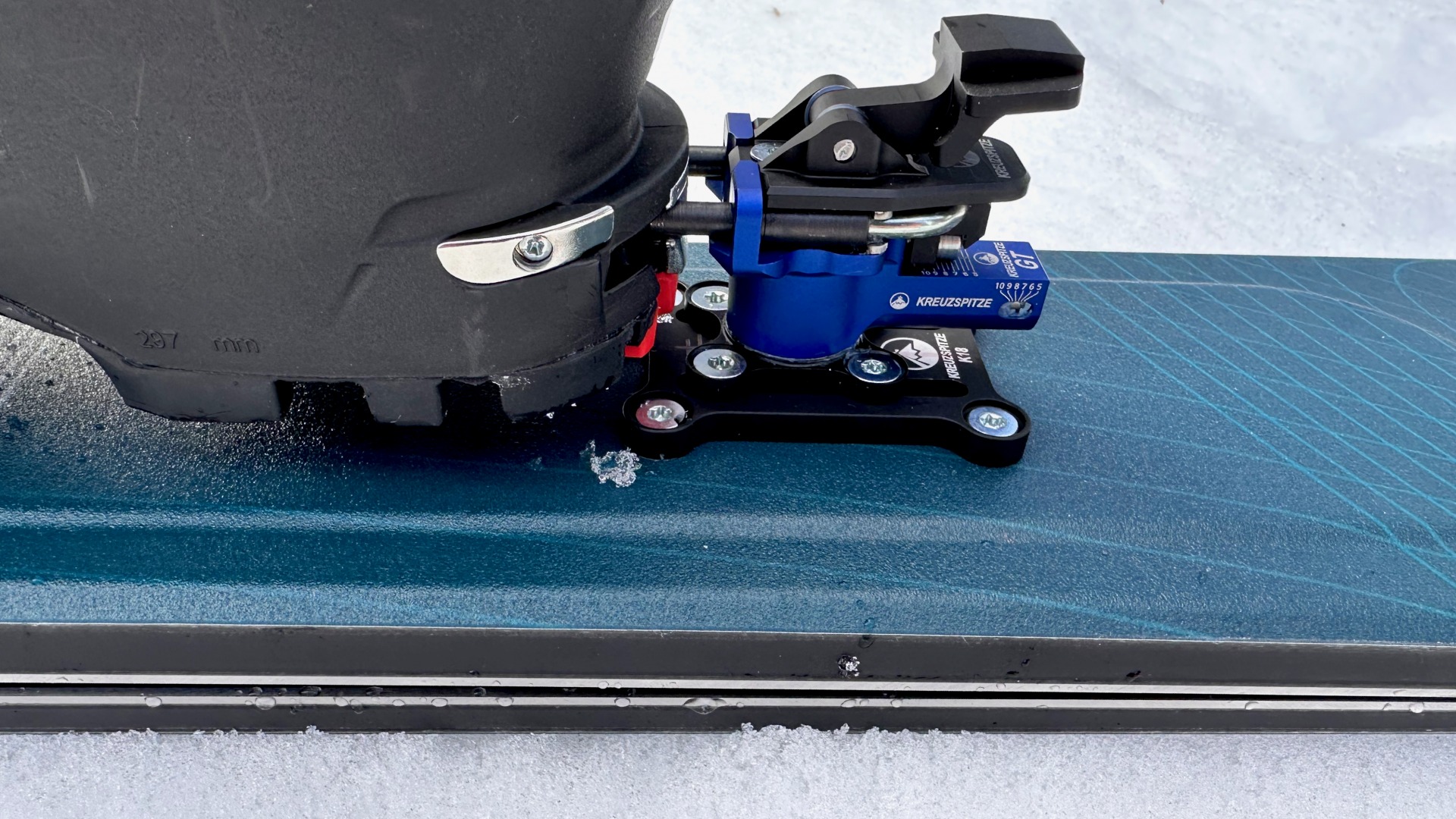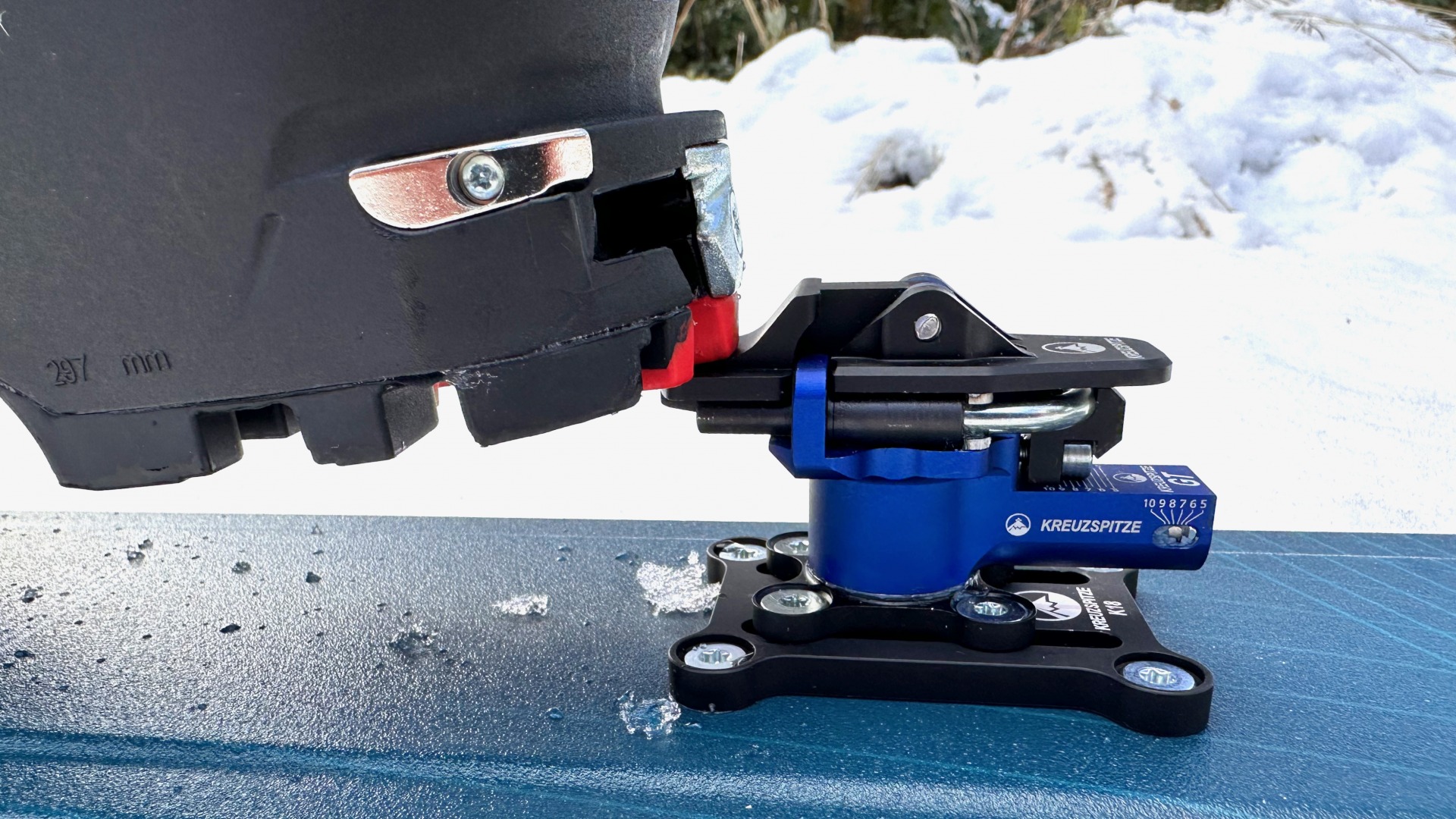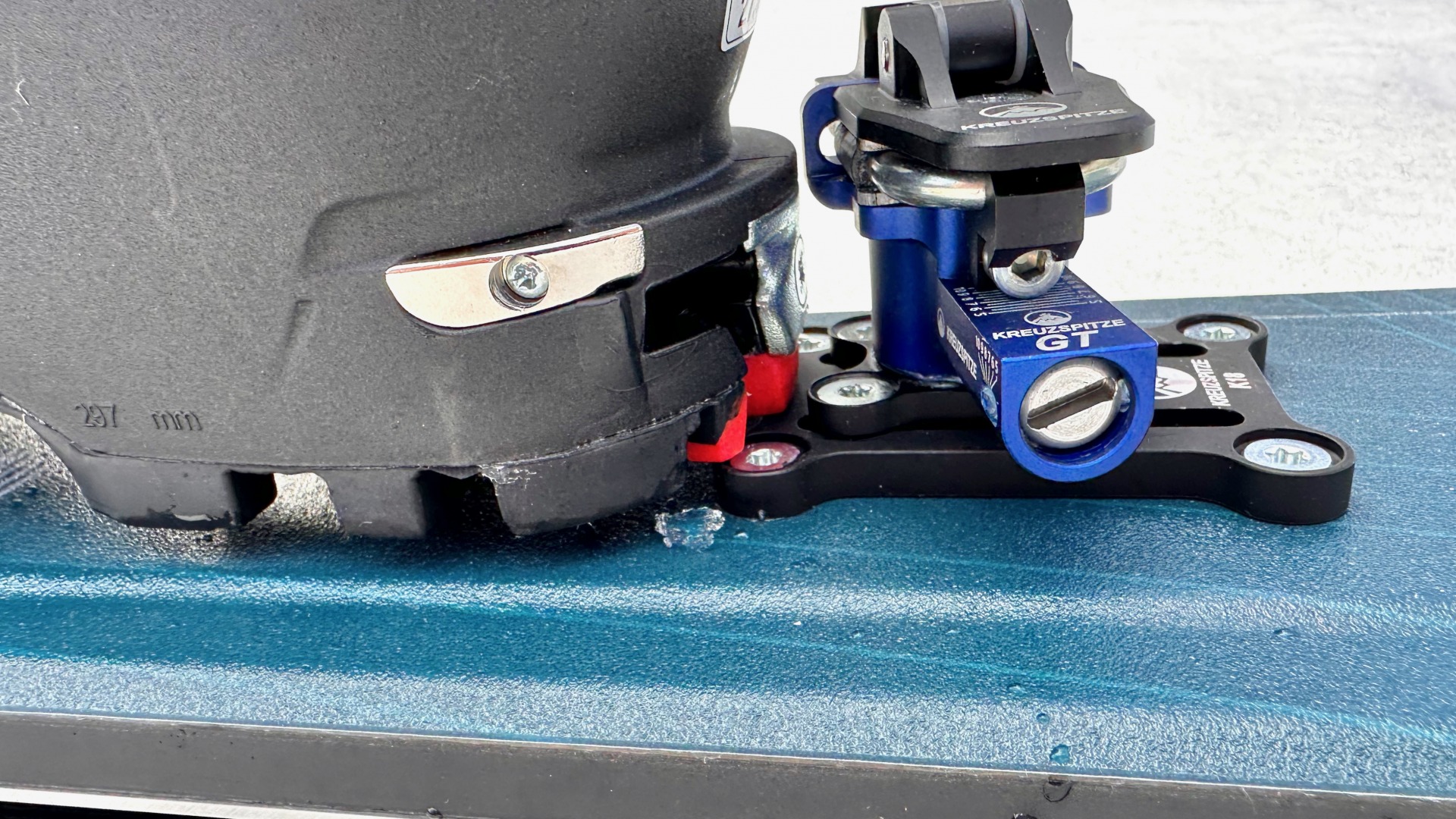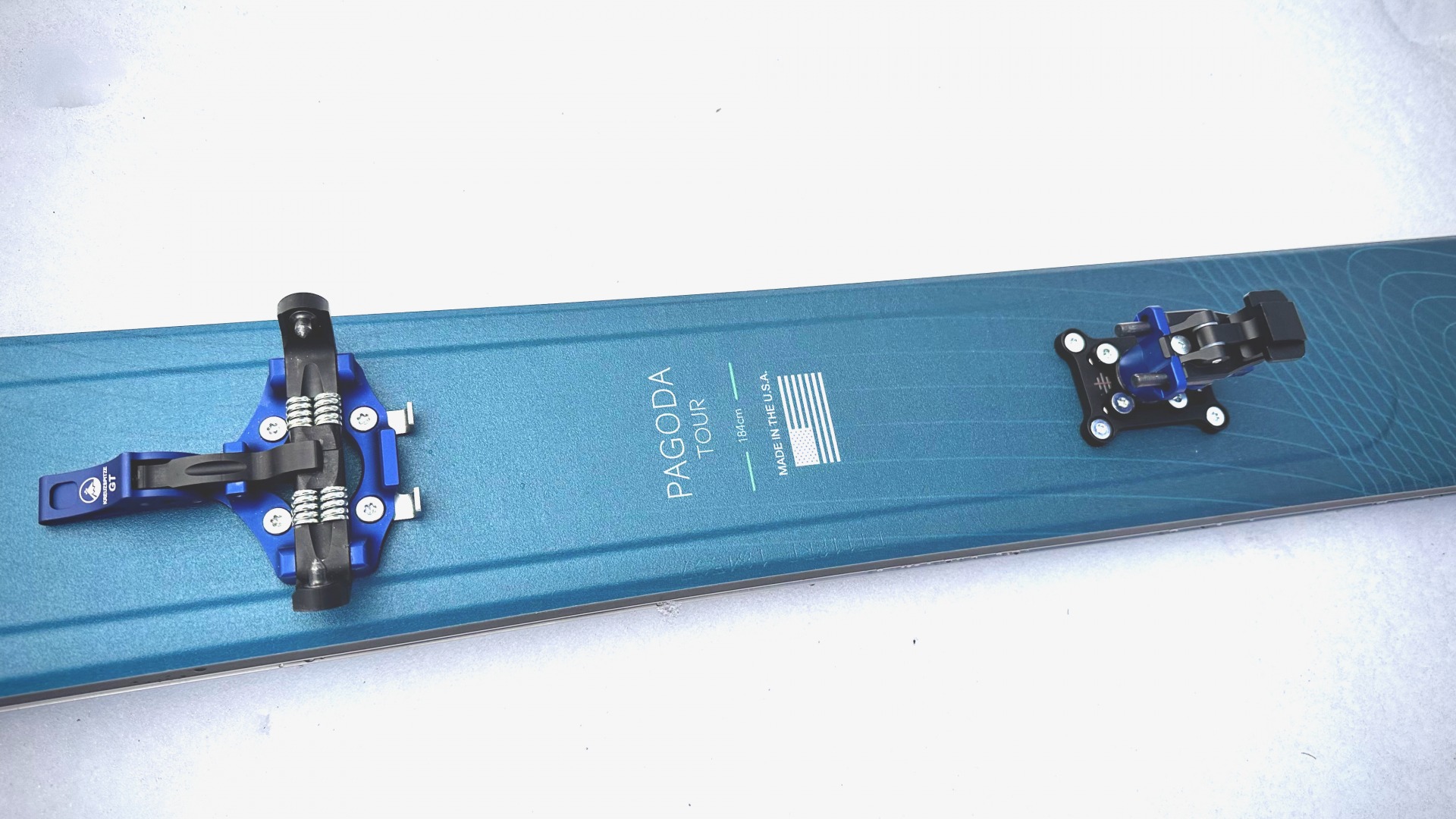
A clean and simple look for a high functioning and light tech binding: The Kreuzspitze GT 2.0 tech binding in all its glory.
Sans adjustment plate sub 200g- check. This small unit has an adjustable vertical and lateral release, clean lines and a solid build. Another sweet binding option from Italy? Check. The high-functioning and minimalist Kreuzspitze GT 2.0 looks to be a savvy binding.
Go lighter, go further, without compromise. Depending on how pure you want to adhere to this backcountry skier’s axiom, the Kreuzspitze GT 2.0 tech binding could be your link between skis and boots for years to come. We’ll jump right into who this binding might be for, as it has a feature set (specifically its adjustable vertical and lateral release) we are used to seeing in heavier bindings.
We’ll likely transfer this binding to a more spring-oriented ski when the sun rises high in the sky this March. For now, the GT 2.0 is mounted on a pair of DPS Pagoda Tour RP 112 (184cm) to derive a ski/binding combo that is 1840g. The bindings, with an 18mm adjustment plate and screws, is 218g; without the plate + screws, it’s 190g. Not too bad for a 112mm underfoot ski. This made-for-soft-snow-ski should be complemented nicely by this Italian binding jewel.
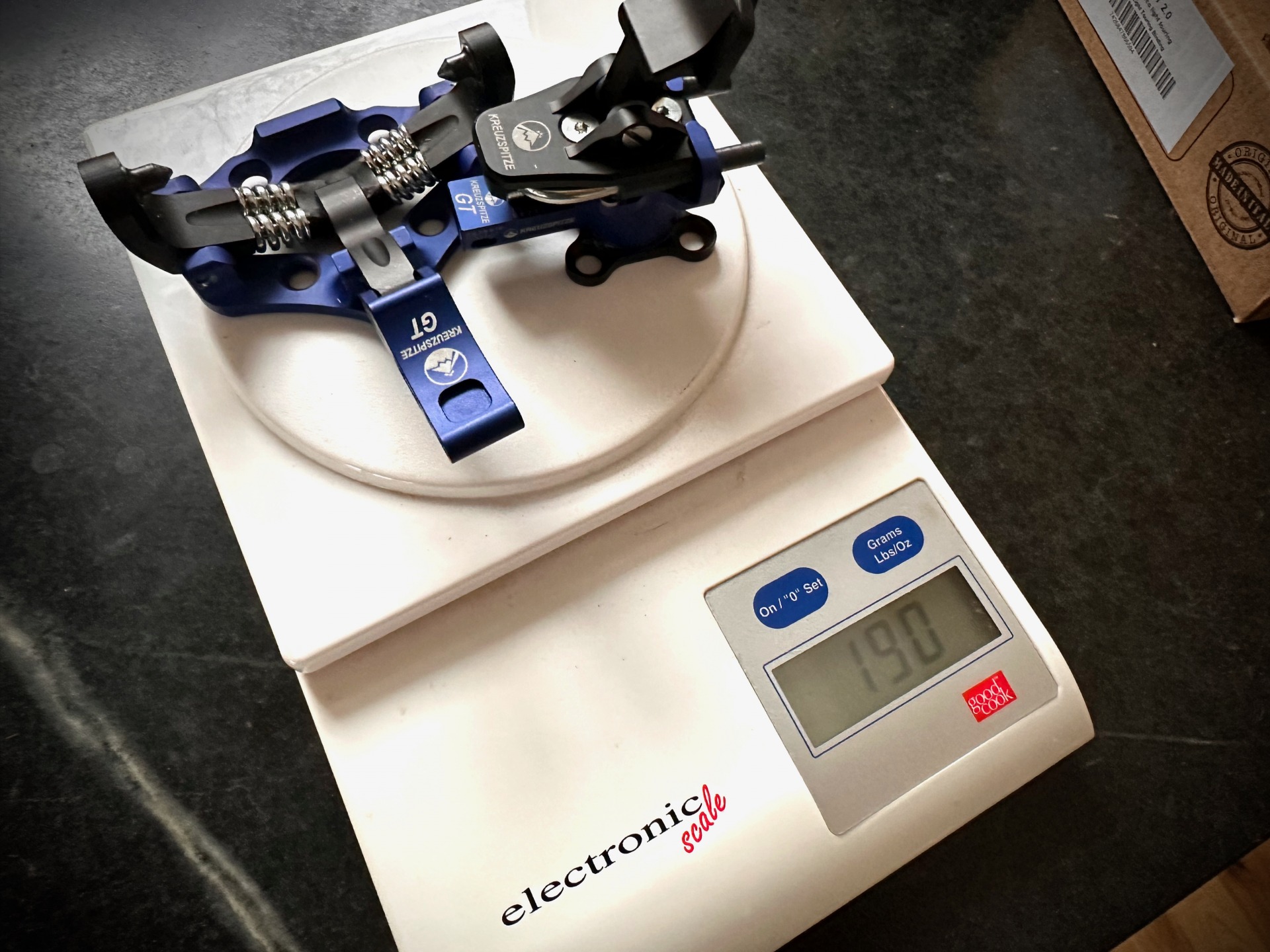
The Kreuzspitze GT 2.0 tech binding weighs an admirable 190g. We’ll call this a race hybrid binding as it offers two riser heights and a flat mode….and adjustable vertical and lateral release settings.
The Toe Unit
The toe unit is simple enough. A double spring on both sides of the pins offers a smooth and secure “snap” upon stepping and tensioning the springs. The toe lever, too, is basic; pull up on the lever to lock out for skinning or steeper higher consequence terrain — you’ve got two lock-out positions. If you have worn the tech inserts because you are skiing too much (a nice problem to have) the second lock-out position might buy you some more time in those keepsake boots.
The Heel Unit: Adjustable Vertical and Lateral Release Values
The heel unit on this get-up is where the simplicity and complexity fuse. An adjustment moves the steel U-spring fore and aft— and again, it’s worth repeating; there are two different adjustments for lateral and vertical, respectively. This race-weight binding (maybe not for the pure Lycra crowd) moves towards the fuller featured class of bindings.
I envision these release value adjustments adding a bit more range to a binding with a racing pedigree. Many race-style / ski mountaineering bindings have fixed release values. The PLUM R-170, a lovely and red and capable binding, comes to mind: both lateral and vertical are fixed at eight.
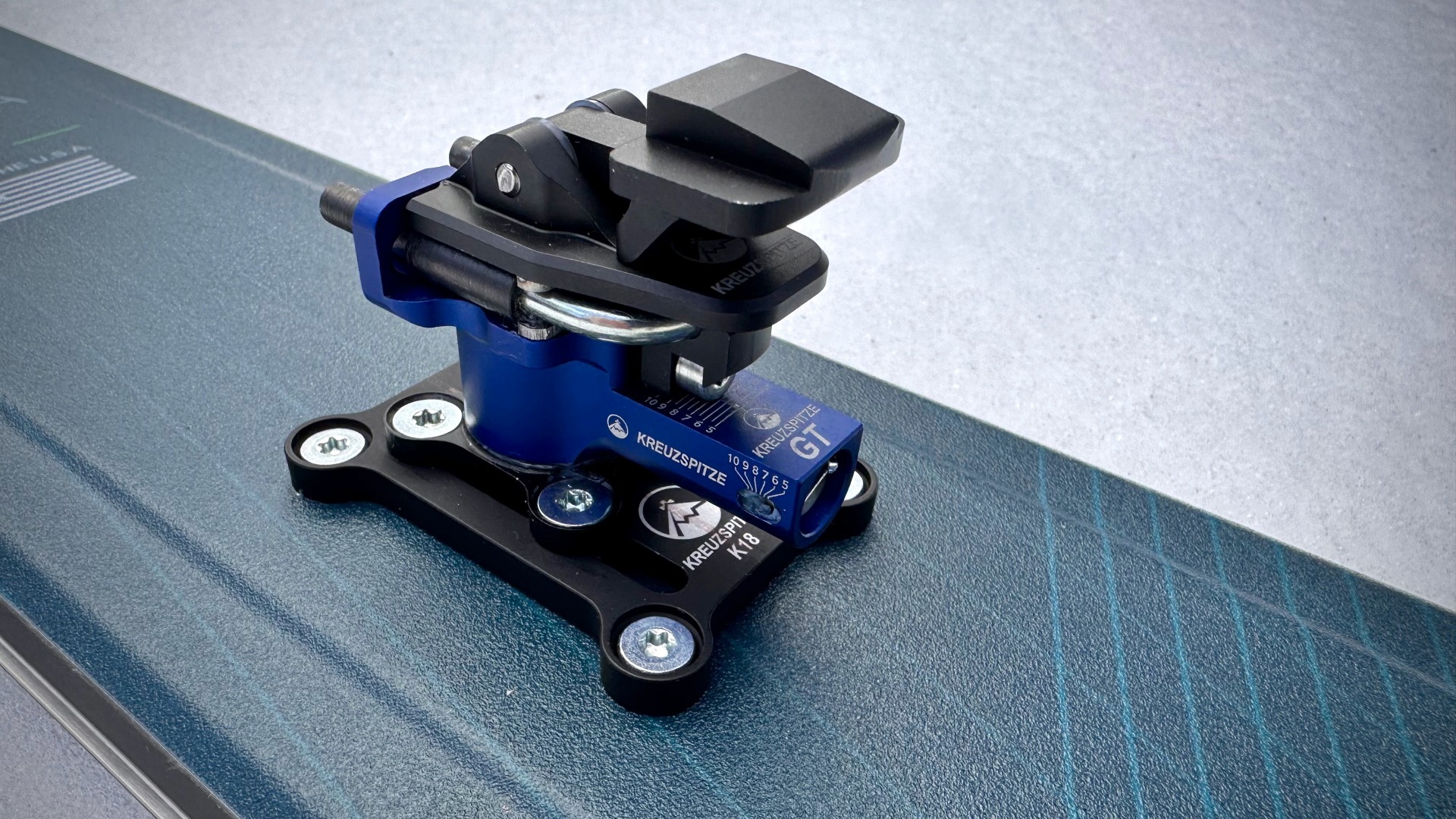
The heel unit, shown here mounted on a 18mm adjustment plate, weighs 98g without the plate and offers adjustable release values. (Add 20g for the plate + four screws.)
Release values range from 5-10 for both lateral and vertical adjustments. I’m not hucking, so that range for the 160-pound body I’m riding out the rest of my life in, works well.
With the Kreuzspitze GT 2.0, you may want to dial up the release values as firmer and steeper terrain is sought come spring. Additionally, adjustability ensures the bindings can be appropriately used by a broader spectrum of skiers or even a growing skier.
Riser Options
Two riser options are available, with a clean flat mode easily accessible by rotating the heel 90 degrees in either direction from pins forward. The flat mode is nearly flat; the adjustment plate puts an extra 3mm under the heel (in flat mode), which is unnoticeable. The heel strikes the adjustment plate, not the ski’s topsheet.
An ample but relatively low riser flips over the pins for those seeking greater efficiency. The low riser affords ~37mm of height (If you are new to the riser-over-the-pins world, look for a how-to soon.)
To access the high riser, spin the heel 180 degrees from pins forward and ascend the steeper skintrack. That riser adds ~52mm of height.
It is possible to mount these bindings without the adjustment plate.
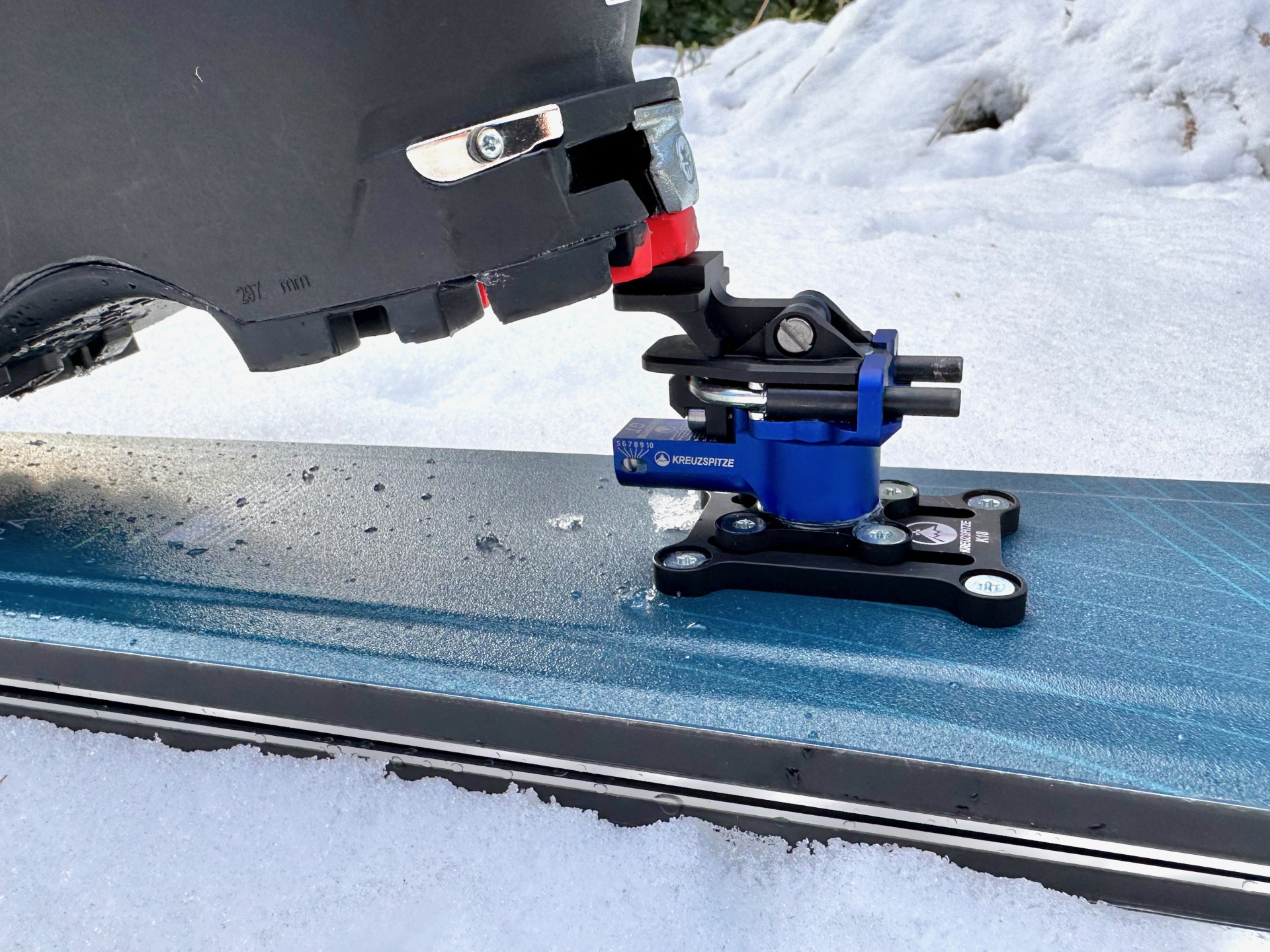
Here the heel unit is turned 180 degrees from pins forward with the high riser deployed. The high riser offers ~52mm of lift.
We’ll dabble a bit with riser options in the long-term review. With a binding like this, you are likely on light boots with a nifty high range of motion. Riser options might be no biggy. For those like me, who desire a light binding (more race than full-featured) for a powder ski, risers options are good, as I’m using a beefier boot with ample, but not best in the world range of motion. Blasphemy? Maybe. But I do employ risers.
Overall, the GT 2.0 looks like a durable and able-to-handle-rowdiness race-type binding. More to come later this season.
Kreuzspitze GT 2.0 Basic Stats
Weight Heel+Toe Unit: 190g
Weight Heel +Toe Unit+Plate/Screws: 218g
Weight Toe Unit: 92g
Weight Heel Unit: 98g
Weight Plate+Screws: 28g
Lateral Release Value: 5-10
Vertical Release Value: 5-10
Riser Positions: flat, ~37mm, ~52mm
Delta: ~0 degrees with no plate.
Ski Crampon Slot: optional/included
Made In: Italy
Price: MSRP $459.95
Jason Albert comes to WildSnow from Bend, Oregon. After growing up on the East Coast, he migrated from Montana to Colorado and settled in Oregon. Simple pleasures are quiet and long days touring. His gray hair might stem from his first Grand Traverse in 2000 when rented leather boots and 210cm skis were not the speed weapons he had hoped for. Jason survived the transition from free-heel kool-aid drinker to faster and lighter (think AT), and safer, are better.


